
One of the most common (and destructive) fungal diseases that affect tomatoes is the dreaded Septoria leaf spot.
Beginning on leaves closest to the ground, the first sign – evident in the name – is spotting.
From the lower leaves, the disease spreads upwards, eventually taking over the entire plant and inducing panic in even the calmest of tomato gardeners.
Luckily, there are several treatments that aid in controlling this disease, and preventative measures that can fend off the panic altogether.
What is Septoria Leaf spot?
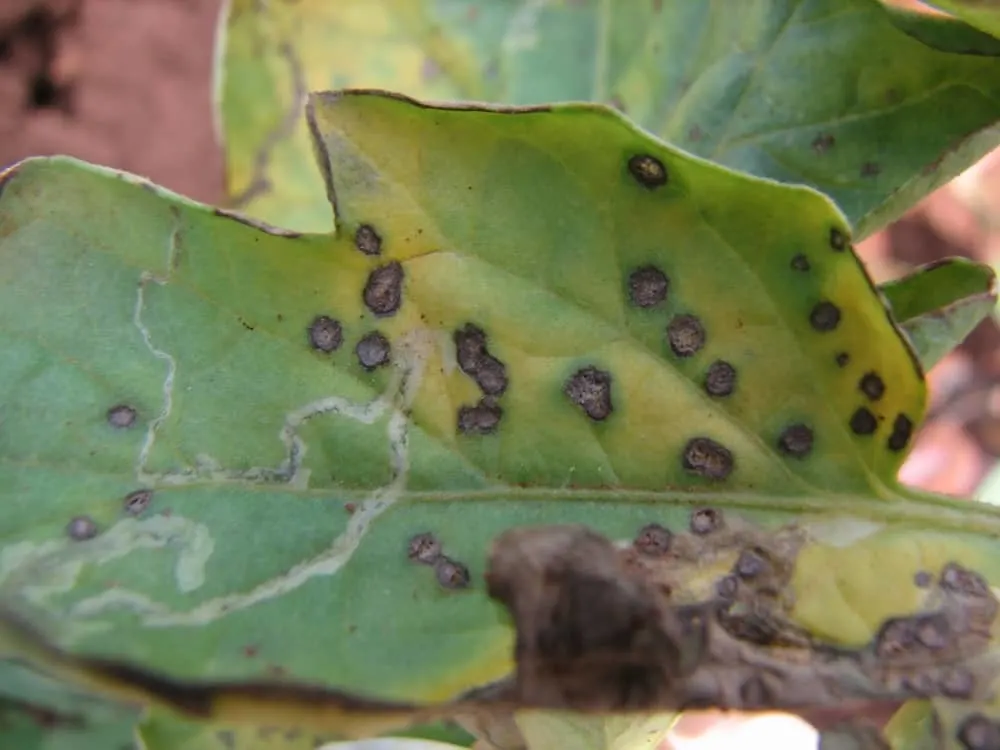
Septoria leaf spot is a fungal disease (caused by Septoria lycopersici) affecting tomatoes and other members of the Solanaceae family, like potatoes and eggplants.
This disease, like many others, thrives in warm, humid climates, and can occur at any point during the season. This disease has many visual similarities to early blight. However, Septoria leaf spots are darker and more rounded while early blight lesions start small but grow erratically.
There are many more dangerous diseases to watch out for, but Septoria leaf spot remains extremely damaging to tomato plants if left untreated. Once identified, it’s important to take action immediately to save your harvest.
Identifying Septoria Leaf Spot
On tomatoes, Septoria causes spots that appear on older, lower-lying leaves. They emerge less than an inch in diameter and as they develop, the edges around the spot turn brown.
Many spots occurring per leaf is a key characteristic of Septoria Leaf spot.
Eventually, these spots will merge, and as they mature, black specks will appear in the centers. These specks are the fungal bodies that produce spores to spread to the rest of the plant.
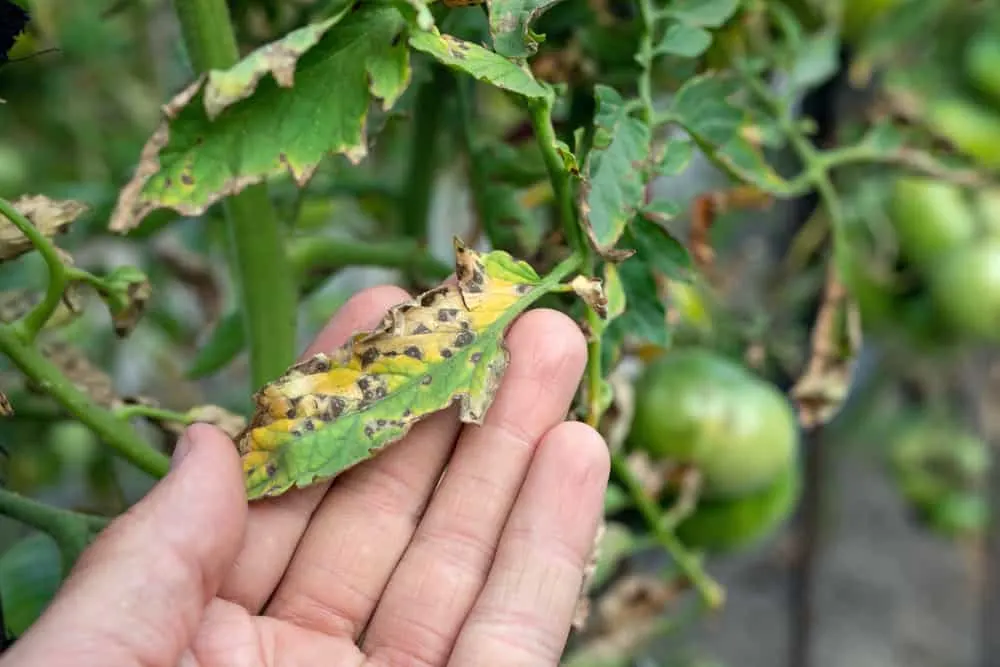
The spots may also occur on stems, or even blossoms, but typically stay away from your fruits. If left untreated, it will spread quickly from the lower, older leaves, upward to younger ones. The leaves will turn yellow, wilt, and fall off, causing a host of other issues.
Septoria leaf spot thrives in wet and warm conditions – those ripe for growing tomatoes. In these conditions, when temperatures reach above 80F, spores develop rapidly, taking over your plant in a matter of weeks.
How it Affects Tomatoes
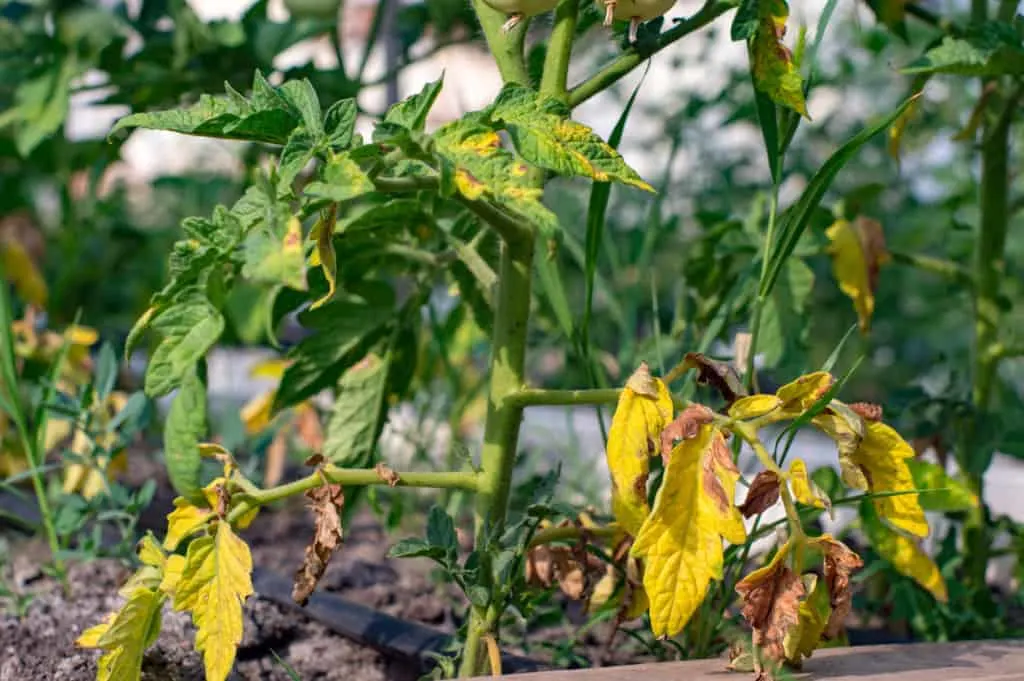
The fungi do not generally affect the tomato fruits, but defoliation will. The lack of leaves results in a weakened tomato plant that produces little fruit. Sunscald is also an issue, due to the lack of protection from the leaves, damaging tomato fruits. The fruit you can harvest will be far less flavourful too.
Occasionally, if Septoria is left to take over the plant, you may find no fruit at all.
How Septoria Spreads
Funguses travel vast distances. This disease is much the same, settling on plant debris and weeds and waiting for the right conditions to strike.
Incorrect watering practices (like overhead watering when water sits on the leaves) can spread the disease from the soil to the plant. Read our guide to correctly watering tomato plants here.
Garden tools that have been infected will also spread Septoria Leaf spot between plants.
Treating Septoria Leaf Spot
Pruning
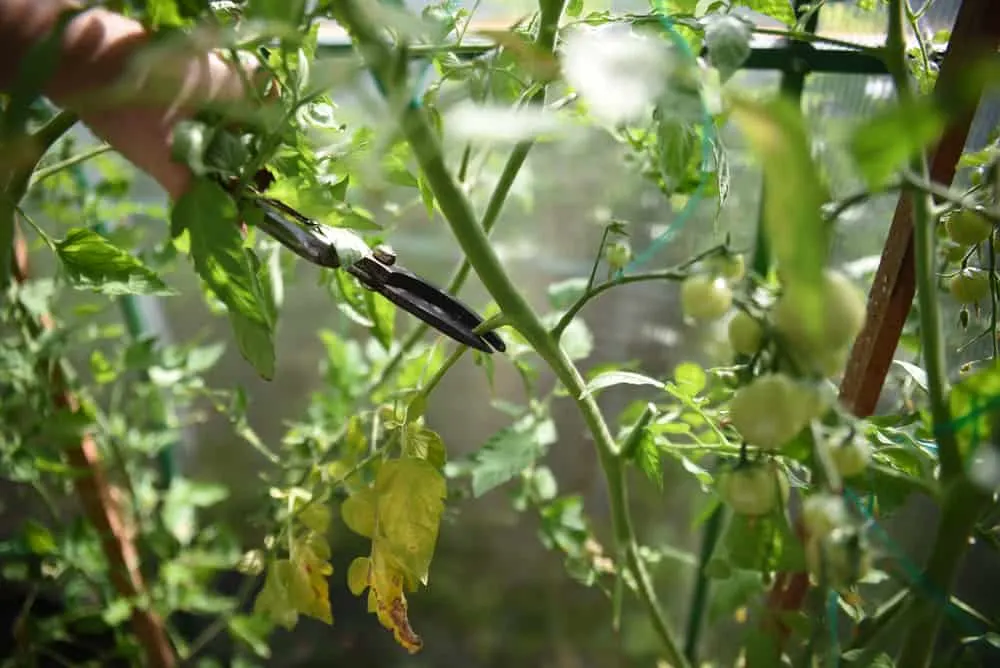
Depending on the type of tomato variety you are growing, pruning may not be essential. However, when you discover Septoria, pruning will be your first line of defense.
It is vital to remove infected leaves as soon as you discover them to slow the spread of the fungus.
As mentioned, the fungus spreads through spores grown on the leaves. If caught early enough, removing these leaves may stop the spread of Septoria leaf spot entirely. Pruning also increases airflow, which is an important treatment and preventative measure.
Do not throw these leaves in your compost though, as it will continue to flourish there. Instead, burn or destroy them.
Organic Fungicide Treatments
Fungicides containing copper or potassium bicarbonate are good options for treating Septoria leaf spot and other deadly diseases, such as early blight. Spray the infected plants as soon as the symptoms appear.
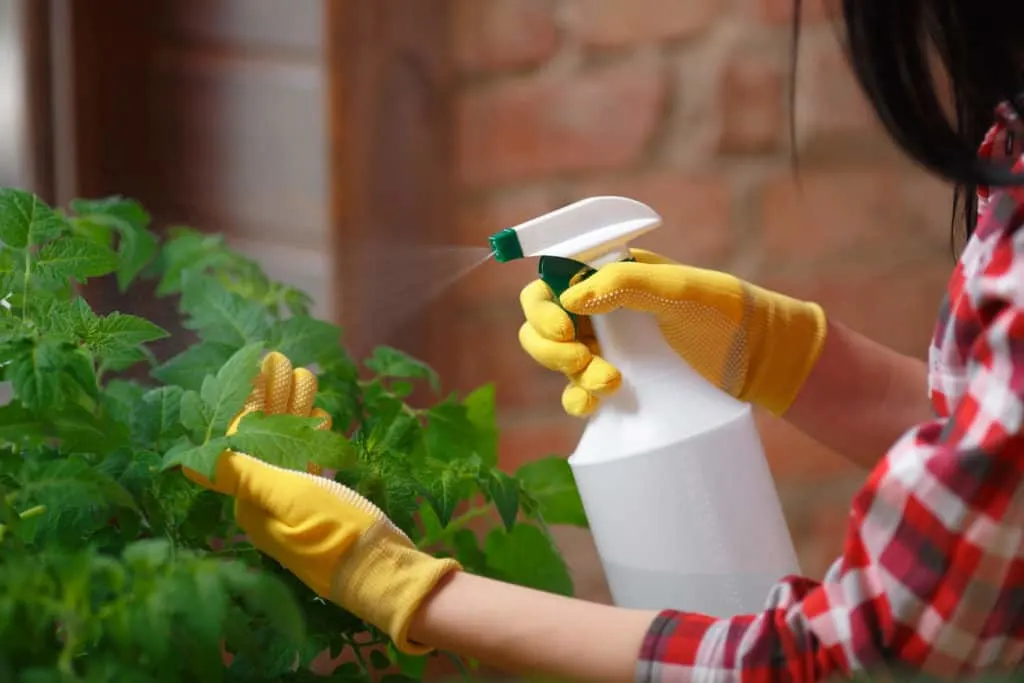
Using a hand sprayer filled with the fungicide solution, ensure the entire plant is sprayed and covered evenly. Avoid implementing this treatment on windy and rainy days, as it may spread to other plants in your garden, or run off the leaves and into the soil. Repeat weekly until the symptoms disappear.
Preventing Septoria Leaf Spot
Garden Hygiene
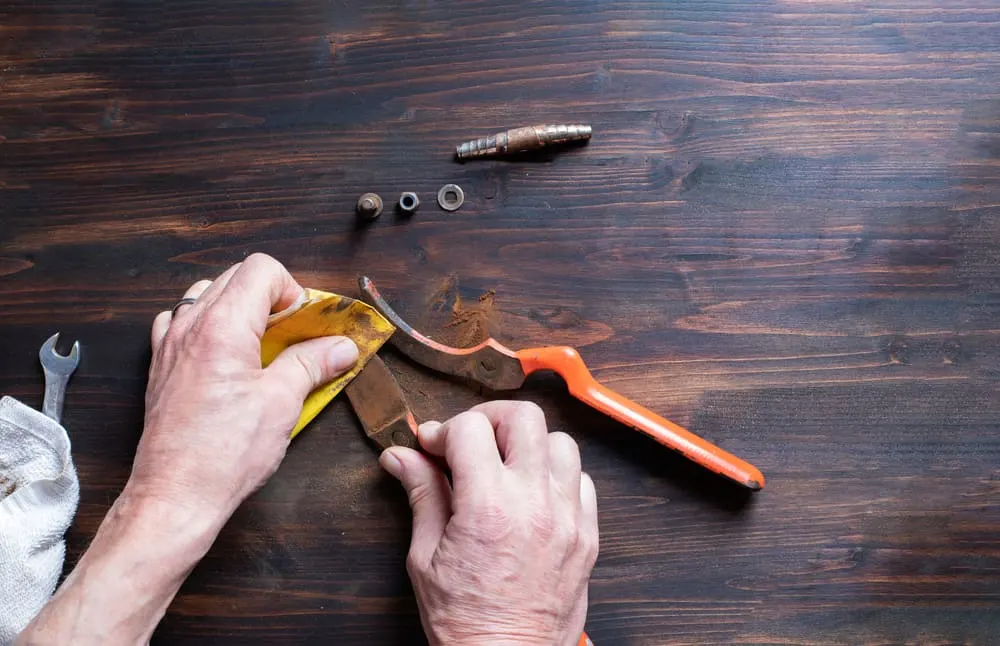
Control of Septoria leaf spot begins with good hygiene in the garden. This not only prevents the spread of Septoria, but the development of many other diseases and the settling of pests.
Ensure that there is no plant debris in and around the tomato plants. That includes weeds, which can be hosts of Septoria fungus. Keep your gardening tools clean between uses, and always disinfect all tools once a disease or pest problem has been spotted.
If growing tomatoes on a large scale, crop rotations will also aid in preventing many diseases, including Septoria Leaf spot.
Promote Airflow
Adequate airflow is important for tomato plant health in general. Increased airflow allows for the lower-lying leaves that don’t get much sun, and the soil, to dry out faster. This reduces dampness, preventing spores from germinating.
Pruning is also a good way to facilitate airflow, but should only be done on indeterminate tomatoes to avoid lessening your yield.
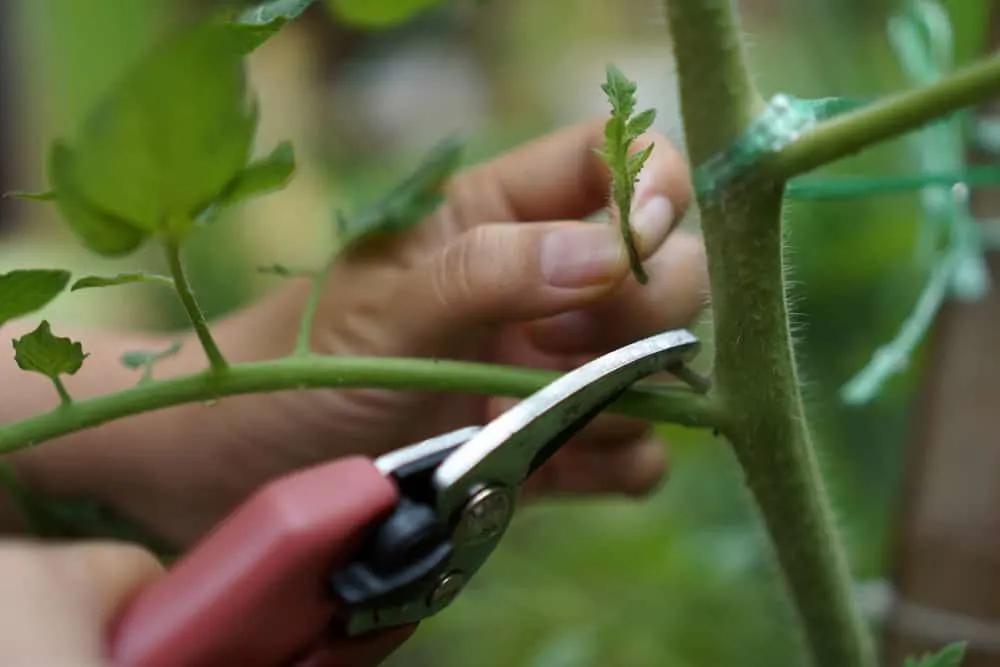
Lifting tomato plants off the ground by staking and caging them is another good way to increase airflow. Proper cleaning of stakes and cages is important before installation, as Septoria Leaf spot can survive and overwinter here.
Mulch
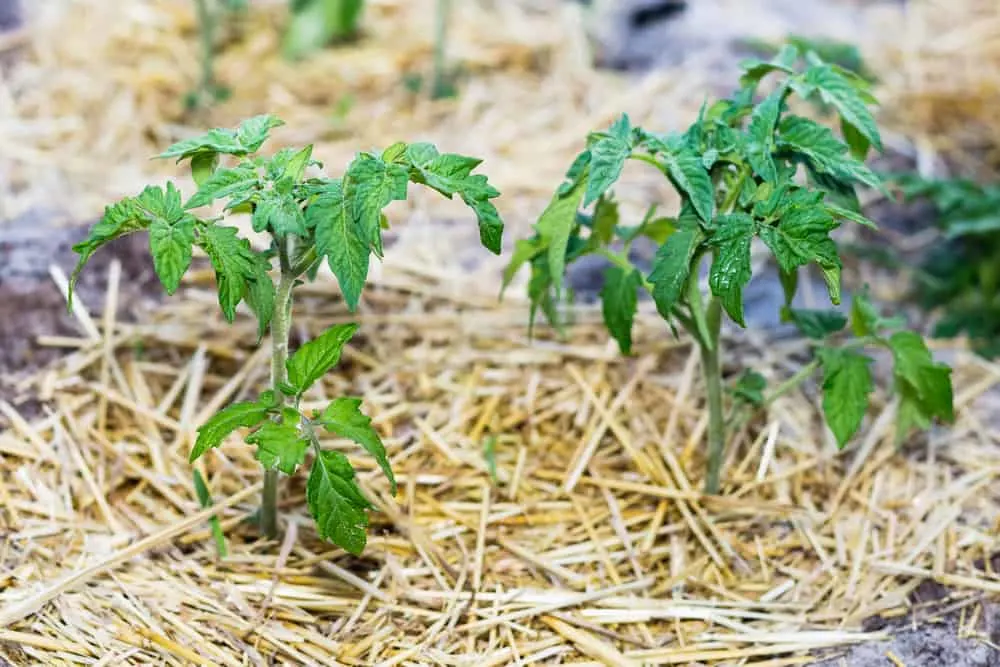
Mulching around the base of your tomato plants prevents infected soil from splashing up on the lower-lying leaves. It also prevents weed seeds from germinating and growing.
It is best to use organic mulch once the soil is warmed to approximately 70F. There are many mulch options ideal for tomatoes, including straw and compost, or you can take a look at our list of 5 Best Tomato Mulches.
Correct Watering Methods
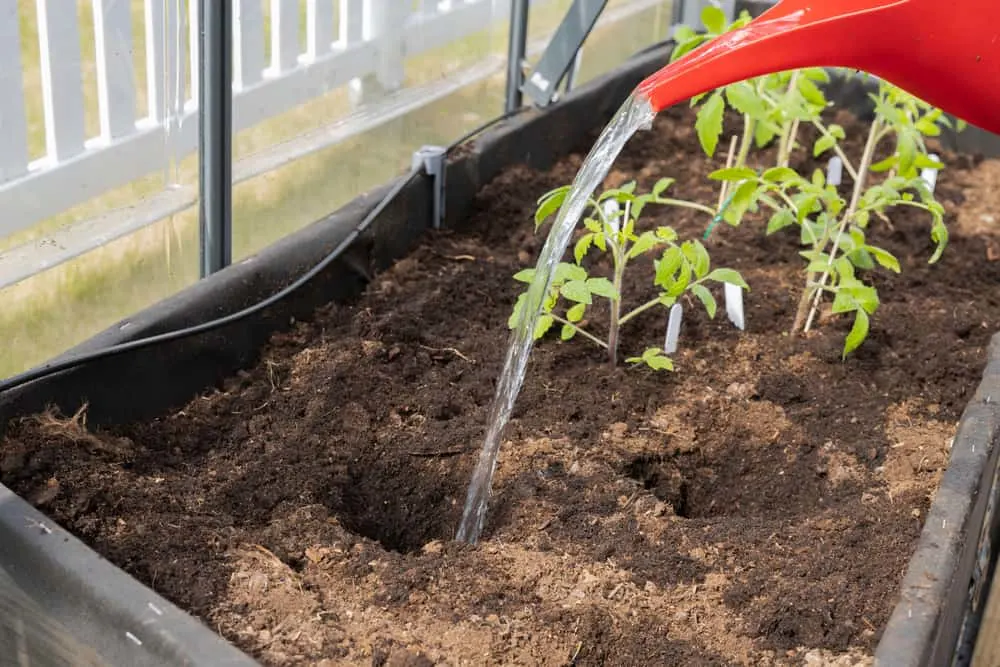
Overhead watering creates the ideal conditions for pests and diseases to settle in and make your tomatoes their new home.
Instead, water tomato plants slowly and deeply at the soil, ensuring no water splashes up from the soil to the leaves. Avoid watering the foliage as much as possible to prevent a range of diseases and damage to the leaves. Always water in the morning so any excess water evaporates, rather than sticking around overnight attracting pests and diseases.
